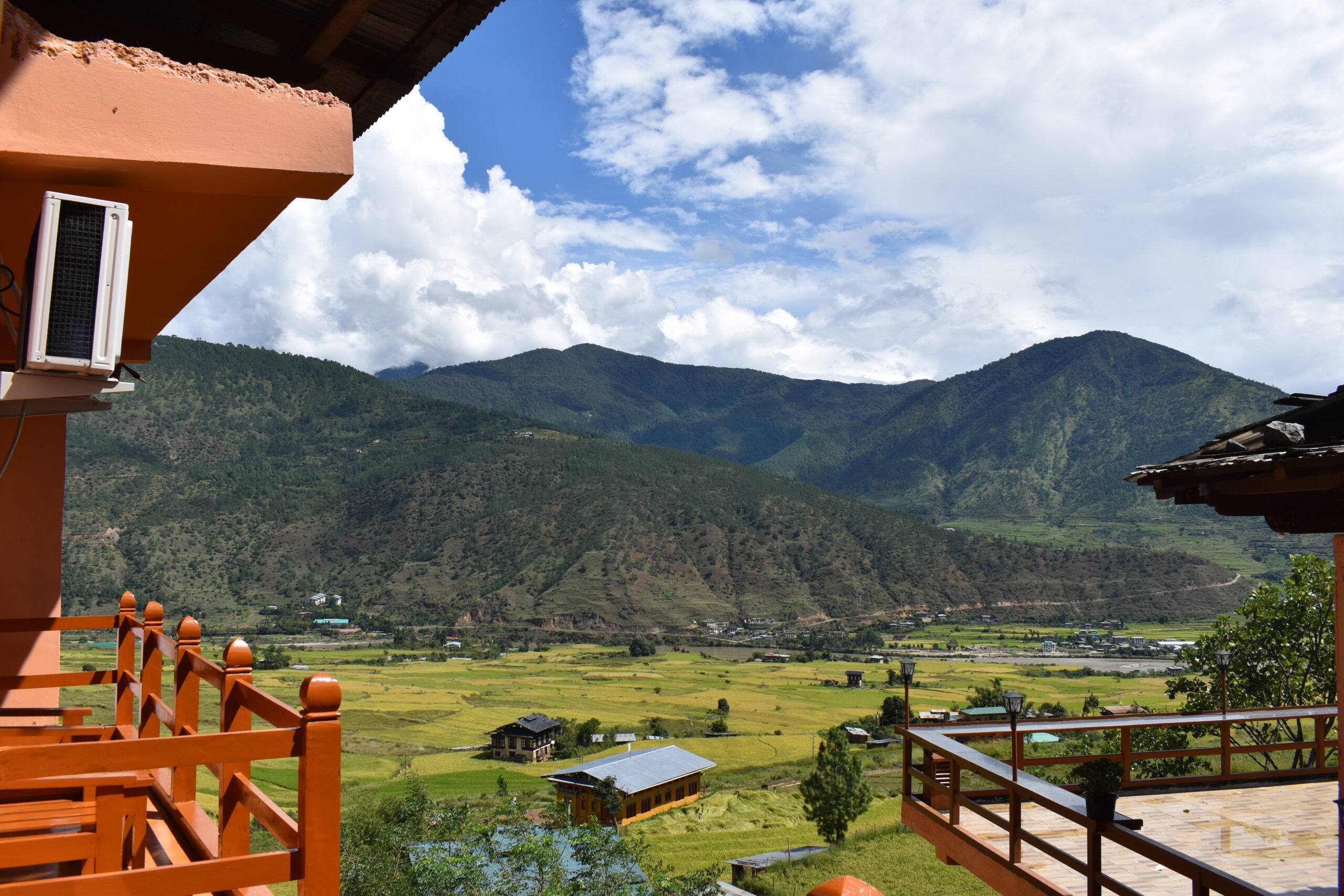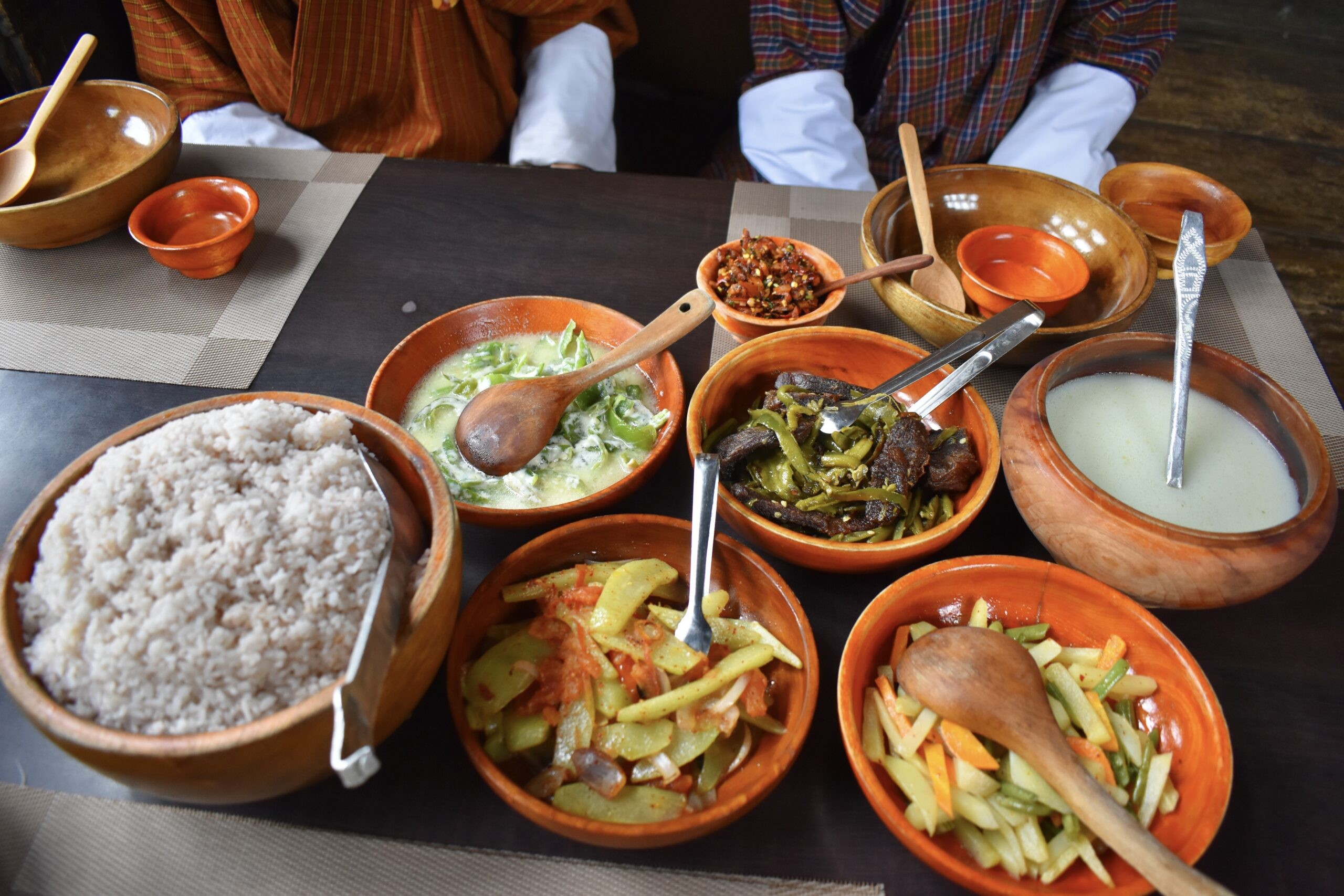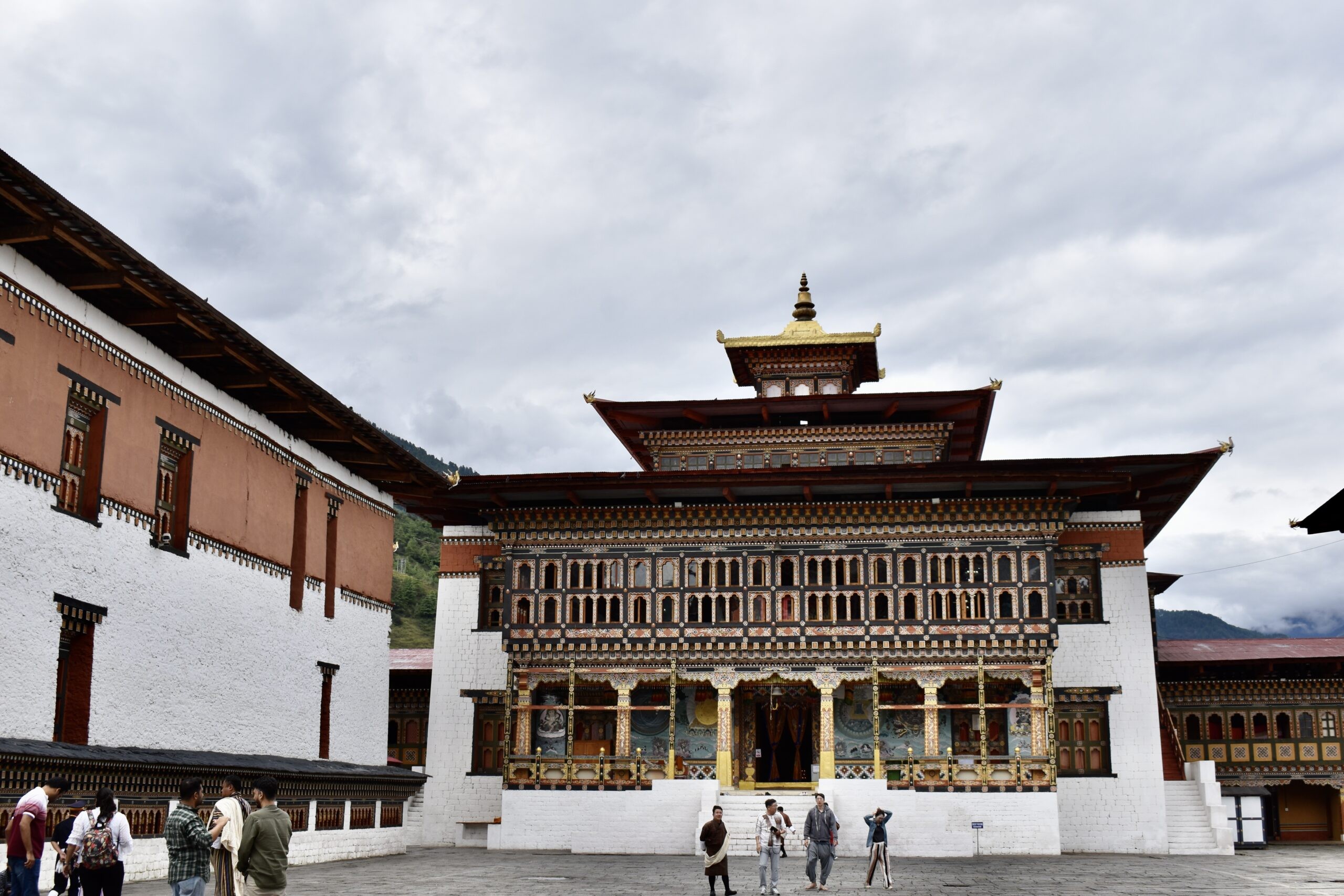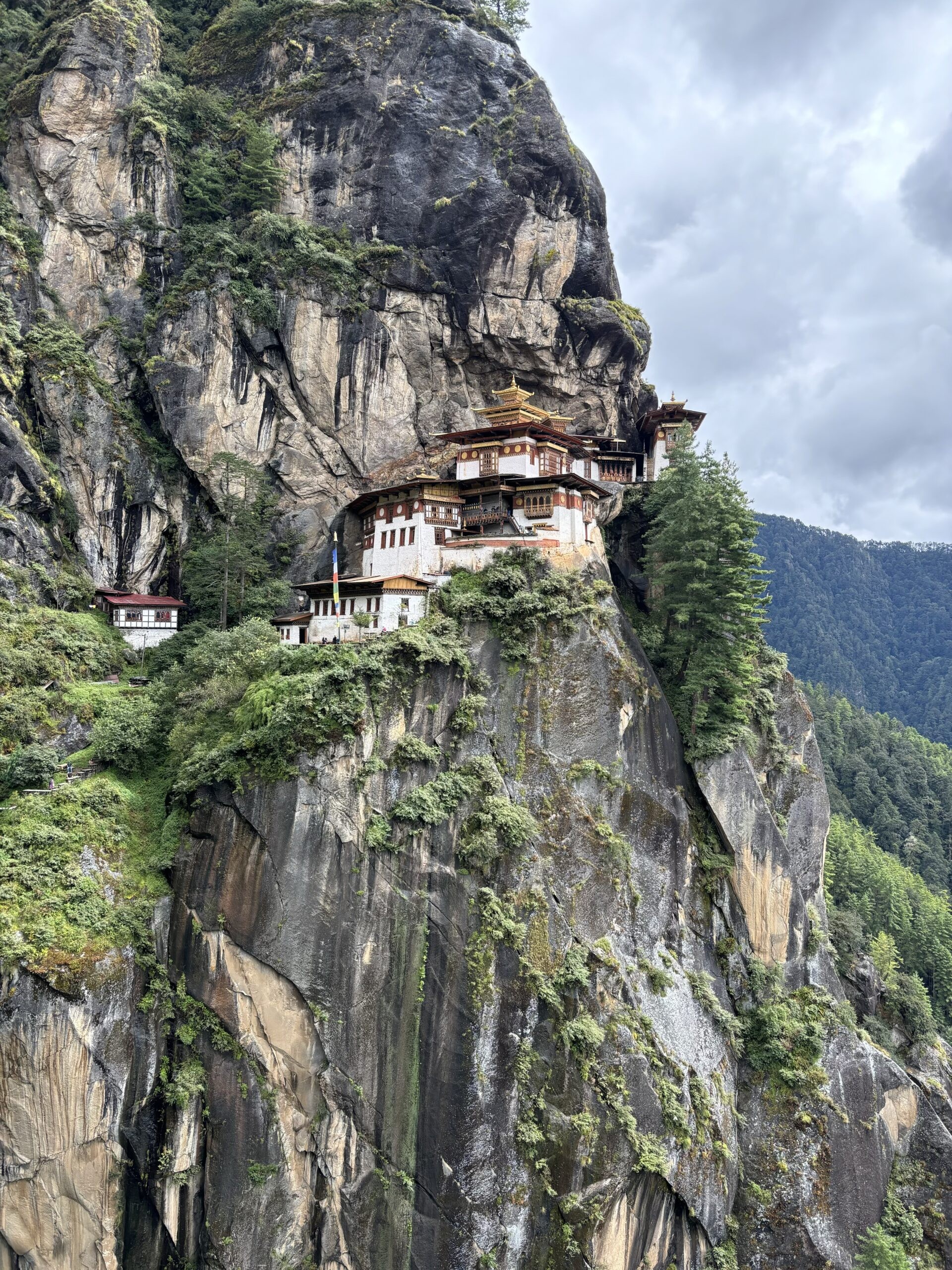Traveling to Bhutan, the Land of the Thunder Dragon, is an experience unlike any other. Can You Travel Bhutan Without A Guide? Yes, under certain conditions. Since 2022, Bhutan has relaxed its tourism regulations, allowing independent travel in specific areas, but it’s crucial to understand the details to plan your trip effectively. Let’s explore the ins and outs of independent travel in Bhutan and how TRAVELS.EDU.VN can make your journey seamless.
1. Understanding Bhutan’s Tourism Policy: Can You Travel Bhutan Without A Guide?
Bhutan has historically maintained a unique approach to tourism, focusing on “high value, low impact.” This strategy aims to preserve the country’s rich culture, pristine environment, and Gross National Happiness.
1.1 Historical Context: Guided Tours Only
Prior to 2022, independent travel in Bhutan was not permitted for most foreign nationals. All tourists, except those from India, Bangladesh, and the Maldives, were required to book their trips through licensed Bhutanese tour operators. This ensured that visitors contributed to the local economy and adhered to the country’s sustainable tourism practices.
1.2 The Shift: Relaxing the Rules
In 2022, Bhutan introduced some changes, allowing tourists to explore the Paro and Thimphu valleys without a mandatory guide. While this offers more flexibility, it also comes with certain requirements and limitations that are important to consider.
1.3 Current Regulations: Key Points
-
Permitted Areas: Independent travel is primarily allowed in the Paro and Thimphu regions.
-
Sustainable Development Fee (SDF): All tourists, regardless of whether they travel with a guide or independently, must pay the SDF. As of now, the SDF is around $100 per person per night.
-
Visa Requirements: A visa is still required for most nationalities. You’ll need to apply for your visa through a licensed Bhutanese tour operator or directly through the Department of Tourism’s online portal.
-
Other Regions: If you plan to visit other regions beyond Paro and Thimphu, you’ll still need to book through a tour operator and have a guide.
2. Exploring Paro and Thimphu Independently
If you’re interested in experiencing Bhutan on your own, focusing on the Paro and Thimphu valleys is your best bet. Here’s what you can expect and how to make the most of your independent trip.
2.1 Paro: Gateway to Bhutan
Paro is home to Bhutan’s only international airport and the iconic Tiger’s Nest Monastery (Taktsang). While you can explore Paro town and some nearby attractions independently, the hike to Tiger’s Nest may still require a permit, and it’s advisable to hire a local guide for safety and navigation.
2.2 Thimphu: The Modern Capital
Thimphu, Bhutan’s capital city, offers a blend of traditional culture and modern development. You can visit monasteries, markets, and museums, and experience Bhutanese cuisine in local restaurants.
2.3 Highlights of Paro and Thimphu
| Attraction | Description | Independent Travel |
|---|---|---|
| Tiger’s Nest Monastery | Iconic monastery clinging to a cliffside. | Permit needed |
| Paro Dzong | Impressive fortress-monastery with stunning architecture. | Yes |
| National Museum of Bhutan | Showcases Bhutanese art, artifacts, and history. | Yes |
| Buddha Dordenma | A massive golden Buddha statue overlooking Thimphu Valley. | Yes |
| Memorial Chorten | A memorial stupa dedicated to world peace. | Yes |
| Weekend Market | A vibrant market where locals sell produce, handicrafts, and textiles. | Yes |
| Folk Heritage Museum | Offers insights into traditional Bhutanese rural life. | Yes |
2.4 Accommodation and Transportation
In Paro and Thimphu, you’ll find a range of hotels, guesthouses, and homestays to suit different budgets. Transportation options include taxis, local buses, and rental cars. However, driving in Bhutan can be challenging due to the mountainous terrain and winding roads, so hiring a local driver is often a better choice.
 Paro Valley View
Paro Valley View
3. Why Choose a Guided Tour?
While independent travel in Bhutan is now possible in limited areas, there are several compelling reasons to opt for a guided tour, especially if you want to experience the full breadth of what Bhutan has to offer.
3.1 Access to Restricted Areas
Many of Bhutan’s most stunning destinations, including Punakha, Gangtey, and Bumthang, are located in restricted areas that require a guide. By booking a tour, you can explore these regions and immerse yourself in Bhutan’s diverse landscapes and cultures.
3.2 Hassle-Free Planning
Planning a trip to Bhutan involves visa applications, permit arrangements, and logistical coordination. A tour operator can handle all these details for you, saving you time and stress.
3.3 Local Expertise
A local guide can provide invaluable insights into Bhutanese culture, history, and customs. They can also help you navigate local customs, communicate with locals, and discover hidden gems that you might miss on your own.
3.4 Safety and Support
Traveling in the Himalayas can present certain challenges, such as altitude sickness and unpredictable weather. A guide can provide assistance and ensure your safety throughout your trip.
4. The Role of TRAVELS.EDU.VN in Your Bhutan Adventure
TRAVELS.EDU.VN is your trusted partner for exploring Bhutan. We offer a range of curated tours and travel services designed to provide you with an authentic, memorable, and hassle-free experience.
4.1 Tailored Itineraries
We understand that every traveler is unique. That’s why we work with you to create personalized itineraries that match your interests, preferences, and budget. Whether you’re interested in cultural immersion, trekking adventures, or spiritual retreats, we can design the perfect trip for you.
4.2 Expert Guides
Our experienced and knowledgeable guides are passionate about sharing their love for Bhutan with you. They’ll take you beyond the tourist hotspots and introduce you to the real Bhutan, with its vibrant culture, warm hospitality, and breathtaking landscapes.
4.3 Sustainable and Responsible Travel
We are committed to promoting sustainable and responsible tourism practices that benefit both travelers and local communities. We work with eco-friendly hotels, support local businesses, and encourage our travelers to respect Bhutan’s environment and culture.
4.4 Comprehensive Support
From visa assistance to on-the-ground support, we’re here to help you every step of the way. We’ll take care of all the details so you can relax and enjoy your Bhutan adventure.
 Bhutanese Food
Bhutanese Food
5. Sample Bhutan Itineraries with TRAVELS.EDU.VN
Here are a few sample itineraries to give you an idea of what you can experience with TRAVELS.EDU.VN.
5.1 7-Day Essential Bhutan Cultural Tour
This tour focuses on Bhutan’s rich cultural heritage, taking you to the must-see destinations in Paro, Thimphu, and Punakha.
Day 1: Arrival in Paro
- Arrive at Paro International Airport and transfer to Thimphu.
- Visit the National Memorial Chorten and Buddha Dordenma.
- Overnight in Thimphu.
Day 2: Thimphu Exploration
- Hike to Choekhortse Goemba.
- Visit the Royal Takin Preserve and Simply Bhutan museum.
- Explore Thimphu Dzong.
- Overnight in Thimphu.
Day 3: Punakha
- Drive to Punakha via Dochula Pass.
- Visit Punakha Dzong and the Pho Chhu Suspension Bridge.
- Overnight in Punakha.
Day 4: Gangtey Valley
- Hike in the scenic Gangtey Valley.
- Visit a local village and temple.
- Overnight in Gangtey.
Day 5: Return to Paro
- Drive back to Paro.
- Explore Paro town and shop for souvenirs.
- Overnight in Paro.
Day 6: Tiger’s Nest Hike
- Hike to the iconic Tiger’s Nest Monastery.
- Enjoy a traditional Bhutanese hot stone bath.
- Overnight in Paro.
Day 7: Departure
- Transfer to Paro International Airport for your departure flight.
5.2 10-Day Bhutan Trekking Adventure
This tour combines cultural sightseeing with a moderate trek in the beautiful Haa Valley.
Days 1-3: Paro and Thimphu (as per the 7-day cultural tour)
Day 4: Drive to Haa Valley
- Drive to Haa Valley, one of the most remote and pristine regions in Bhutan.
- Visit the Lhakhang Karpo (White Temple) and Lhakhang Nagpo (Black Temple).
- Overnight in Haa.
Day 5: Haa Valley Trek
- Embark on a scenic trek through the Haa Valley, passing through forests, meadows, and traditional villages.
- Overnight in a campsite or local guesthouse.
Day 6: Return to Paro
- Complete the trek and drive back to Paro.
- Relax and unwind after your trekking adventure.
- Overnight in Paro.
Days 7-10: Paro and Departure (as per the 7-day cultural tour)
5.3 14-Day Spiritual Retreat in Bhutan
This tour is designed for those seeking a deeper connection with Bhutan’s spiritual traditions.
Days 1-5: Paro, Thimphu, and Punakha (as per the 7-day cultural tour)
Day 6: Travel to Bumthang
- Take a domestic flight or drive to Bumthang, the spiritual heartland of Bhutan.
- Visit Jambay Lhakhang, one of the oldest temples in Bhutan.
- Overnight in Bumthang.
Day 7: Bumthang Exploration
- Explore the various monasteries and temples in Bumthang, including Kurjey Lhakhang and Tamshing Lhakhang.
- Visit the Mebar Tsho (Burning Lake), a sacred site associated with the treasure revealer Pema Lingpa.
- Overnight in Bumthang.
Day 8: Meditation and Mindfulness
- Participate in meditation and mindfulness sessions led by local monks.
- Learn about Bhutanese Buddhist philosophy and practices.
- Overnight in Bumthang.
Day 9: Cultural Immersion
- Visit a local farm and learn about traditional Bhutanese farming practices.
- Interact with local families and experience their daily life.
- Overnight in Bumthang.
Day 10: Return to Paro
- Take a domestic flight or drive back to Paro.
- Overnight in Paro.
Days 11-14: Paro and Departure (as per the 7-day cultural tour)
6. Cost of Traveling to Bhutan
Understanding the costs involved in traveling to Bhutan is crucial for planning your trip effectively. Here’s a breakdown of the key expenses:
6.1 Sustainable Development Fee (SDF)
As mentioned earlier, all tourists visiting Bhutan are required to pay a Sustainable Development Fee (SDF). Currently, the SDF is approximately $100 per person per night. This fee goes towards funding Bhutan’s sustainable development projects, including environmental conservation, healthcare, and education.
6.2 Visa Fee
A visa is required for most nationalities to enter Bhutan. The visa fee is typically around $40 and is processed through a licensed Bhutanese tour operator or the Department of Tourism’s online portal.
6.3 Accommodation
Accommodation costs in Bhutan can vary depending on the type of lodging you choose. Here’s a general guideline:
- Budget Guesthouses: $30 – $50 per night
- Mid-Range Hotels: $70 – $150 per night
- Luxury Hotels: $200+ per night
6.4 Food
Food costs in Bhutan are relatively reasonable. You can expect to pay:
- Local Restaurants: $5 – $10 per meal
- Tourist Restaurants: $15 – $30 per meal
6.5 Transportation
Transportation costs can vary depending on how you choose to get around:
- Taxis: Within city limits, $5 – $10 per ride
- Rental Cars: $50 – $100 per day (excluding fuel)
- Private Drivers: $100 – $150 per day (including fuel and driver’s expenses)
6.6 Tour Costs
If you choose to book a guided tour, the cost will depend on the itinerary, duration, and level of service. A general estimate for a 7-day tour is between $2,000 and $4,000 per person.
6.7 Activities and Entrance Fees
Many of Bhutan’s attractions require entrance fees. These can range from $5 to $20 per site. Activities like hot stone baths and cultural shows may also have additional costs.
6.8 Sample Budget Breakdown (Per Person for 7 Days)
| Expense | Estimated Cost |
|---|---|
| Sustainable Development Fee | $700 |
| Visa Fee | $40 |
| Accommodation | $350 – $1,050 |
| Food | $210 – $420 |
| Transportation | $100 – $300 |
| Activities and Entrance Fees | $50 – $150 |
| Total | $1,450 – $2,660 |
Note: These are just estimates, and your actual expenses may vary depending on your travel style and preferences.
 Thimphu Dzong
Thimphu Dzong
7. Tips for Planning Your Bhutan Trip
Here are some essential tips to help you plan your Bhutan adventure:
-
Book in Advance: Bhutan has limited accommodation options, especially during peak season. It’s advisable to book your flights, hotels, and tours well in advance.
-
Pack Appropriately: Bhutan’s climate can vary depending on the season and altitude. Pack layers of clothing, including warm jackets, comfortable shoes, and rain gear.
-
Respect Local Customs: Bhutan is a deeply traditional country. Dress modestly when visiting temples and monasteries, and be mindful of local customs and etiquette.
-
Stay Hydrated: Drink plenty of water to avoid altitude sickness, especially when trekking.
-
Be Prepared for Limited Internet Access: Internet access in Bhutan can be slow and unreliable, especially in remote areas. Consider purchasing a local SIM card for better connectivity.
-
Learn Basic Phrases: Learning a few basic phrases in Dzongkha, the national language of Bhutan, can enhance your interactions with locals.
-
Travel Insurance: Ensure you have comprehensive travel insurance that covers medical emergencies, trip cancellations, and loss of belongings.
8. Addressing Common Concerns
8.1 Is Bhutan Expensive?
Yes, Bhutan is generally considered an expensive destination due to the Sustainable Development Fee. However, the SDF contributes to the country’s sustainable development and helps preserve its unique culture and environment.
8.2 Is it Safe to Travel in Bhutan?
Bhutan is one of the safest countries in the world, with a low crime rate and a welcoming atmosphere.
8.3 What is the Best Time to Visit Bhutan?
The best time to visit Bhutan is during the spring (March to May) and autumn (September to November) seasons, when the weather is pleasant and the skies are clear.
8.4 Can I Extend My Stay in Bhutan?
Yes, you can extend your stay in Bhutan, but you’ll need to obtain an extension from the Department of Tourism and pay the additional SDF for each night.
8.5 What Currency is Used in Bhutan?
The official currency of Bhutan is the Ngultrum (BTN), which is pegged to the Indian Rupee (INR). Indian Rupees are also widely accepted in Bhutan.
 Tiger's Nest Monastery
Tiger's Nest Monastery
9. Why Choose TRAVELS.EDU.VN for Your Bhutan Trip?
TRAVELS.EDU.VN offers unparalleled expertise, personalized service, and a commitment to sustainable travel. Here’s why you should choose us for your Bhutan adventure:
-
Customized Itineraries: We tailor each trip to your specific interests and preferences.
-
Expert Guides: Our local guides are passionate about sharing their knowledge of Bhutan.
-
Sustainable Travel: We prioritize responsible tourism practices.
-
24/7 Support: We’re available to assist you throughout your trip.
-
Competitive Pricing: We offer transparent and competitive pricing.
10. Ready to Book Your Bhutan Adventure?
Don’t miss the opportunity to experience the magic of Bhutan with TRAVELS.EDU.VN. Contact us today to start planning your dream trip.
Contact Information:
- Address: 123 Main St, Napa, CA 94559, United States
- WhatsApp: +1 (707) 257-5400
- Website: TRAVELS.EDU.VN
Let us help you create memories that will last a lifetime!
FAQ: Traveling to Bhutan
1. Can you travel Bhutan without a guide in 2024?
Yes, since 2022, independent travel is permitted in Paro and Thimphu, but other regions require a guide.
2. What is the Sustainable Development Fee (SDF) for Bhutan?
The SDF is approximately $100 per person per night, contributing to Bhutan’s sustainable development.
3. Do I need a visa to visit Bhutan?
Yes, most nationalities require a visa, which can be processed through a licensed tour operator or online.
4. What are the best places to visit in Bhutan?
Popular destinations include Paro (Tiger’s Nest), Thimphu (Buddha Dordenma), and Punakha (Punakha Dzong).
5. What is the best time to visit Bhutan?
Spring (March to May) and autumn (September to November) offer pleasant weather and clear skies.
6. How much does it cost to travel to Bhutan?
A 7-day trip can range from $1,450 to $2,660 per person, excluding flights.
7. Is Bhutan a safe country to visit?
Yes, Bhutan is known for its low crime rate and welcoming atmosphere.
8. What currency is used in Bhutan?
The official currency is the Ngultrum (BTN), pegged to the Indian Rupee (INR).
9. Can TRAVELS.EDU.VN help me plan my Bhutan trip?
Yes, TRAVELS.EDU.VN offers customized itineraries, expert guides, and comprehensive support.
10. How can I contact TRAVELS.EDU.VN to book my trip?
You can reach us at +1 (707) 257-5400 or visit our website at TRAVELS.EDU.VN.
By choosing travels.edu.vn, you ensure a seamless and unforgettable Bhutanese adventure!
